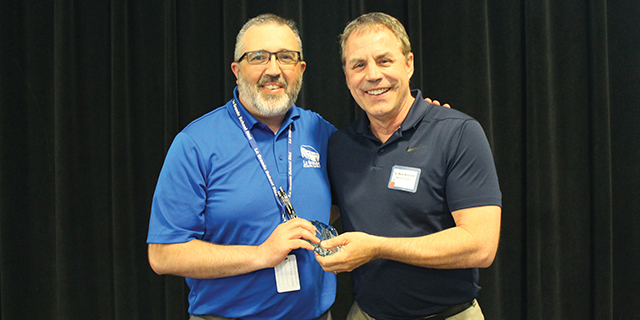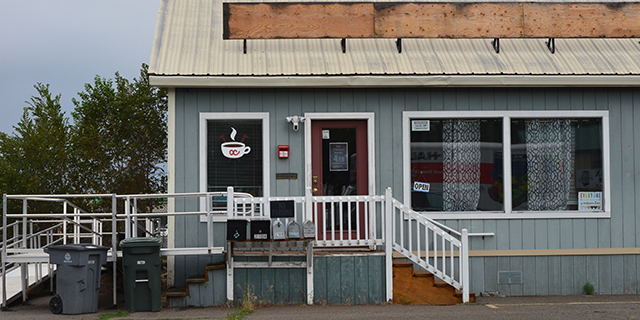Caught Ovgard: Braving the frigid water of Bear Lake
Published 3:00 am Saturday, April 29, 2023

- Ovgard
Typically, I make an irresponsible financial decision or two and go somewhere warm for spring break. It’s a rite of passage for those of us in the world of education to cling to that last week off before summer and use it as a way to rejuvenate our minds and bodies in preparation for that roughly 75-day stretch until freedom rings with the final school bell.
In years past, I’ve gone to southern California, Mexico, Hawaii or anywhere I could escape the frigid misery those of us residing north of the 35th parallel must endure for several months each year.
This year, I opted to stay closer to home and focus on family. My little brother, Gabe, his wife Rylee, and their adorable son, Brave, live in the Boise area, so I planned to visit them even though that moved me farther from warm weather. The idea was to stay with them part of the week and fish southern Idaho and northern Utah the rest of the time. Going into the week, I knew it was going to be cold and not ideal for fishing, but I wasn’t expecting a wintry hellscape.
Cold
Driving from Boise to Twin Falls, I fished a few hot springs that muted the effect of the wintry wind. Air temperatures were frigid, but the warm air rising off the springs helped limit the impact of Jack Frost.
From Twin Falls to Garden City, Utah, I began to realize the weather was not on my side. Several of my stops were snowed-in, and in places, the mountain passes were pretty sketchy. A quick stop for a pizza lunch in Logan left me optimistic, given the lack of snow on the ground, but it was short-lived. Logan has a comparable elevation to my native Klamath Falls, and the dry cold was familiar.
Climbing out of Logan north along U.S. Highway 89, the snow banks grew higher as the roads rose more than 2,000 feet and then dropped a little before Garden City, Utah — a city resting just under 6,000 feet.
Snow banks framed the road all around the massive expanse of Bear Lake, and it quickly became apparent that the massive, ovular lake spanning the Idaho-Utah border was frozen over. The motel staff said there was open water where the Bear River entered the lake, and that people were ice fishing, so I held out hope.
Bear Lake is home to four endemic (meaning only found there) species, as well as its own species of cutthroat trout, the Bear River cutthroat. Each species lives deep in summer when tourists flock to the lake, but at different times during the winter, each comes shallow to spawn.
I was hoping to find Bear Lake sculpin, Bear Lake whitefish and Bonneville whitefish, all of which hug the shorelines from roughly March through May. Unfortunately, without open water, this would be near impossible.
Holes
After layering up against the single-digit cold, I made my way to the water. It was frozen as far as the eye could see except for a small patch inside the marina, where it was too shallow for whitefish spawning activity. I walked to the outside of the boat basin through thick snow and found the big rocks that — at the very least — would hold sculpin if none of the other species I was after were present. The afternoon sun was fading, so I figured I could break some holes in the ice and come back later. Without gloves, it was frigid work, but I broke half a dozen holes in the ice near the proper habitat and planned to return after dark.
At full pool, Bear Lake covers ov 70,000 acres, but only three or four were ice-free. Well, at least not iced over. There was open water near the river mouth, but broken pieces of ice and a loose crust on the surface at the edges of the flow made fishing tough. Still, I persisted until dark. After fruitlessly searching that shoreline for sculpins, I returned to my ice holes, stopping on the way to fish a small feeder creek that yielded a single Paiute sculpin — a fish I’d caught before — but none of the lake’s endemics.
In the hours since I’d broken those holes in the ice, they’d refrozen to a clear crust maybe one-quarter of an inch thick. Once again, I trudged through the thigh-deep snow blanketing the lakeshore and broke the thin ice with my boot heel, scooping out the shards with hands that quickly surrendered their function to air temperatures hovering around zero degrees Fahrenheit.
I could see small, photosensitive minnows fleeing the beam of my headlamp, but I recognized them as speckled dace, the most widespread western minnow, so they didn’t hold my attention.
After failing to find a sculpin in the first four holes, I saw a small gray fish with an oversized head dart under a rock to hide from my prying light. It took 10 minutes of trying to get hypothermia, but I finally got it to eat a small piece of worm on a tiny hook.
For a proper ID, I needed the fish to flare its fins, which meant it had to be submerged. I pinched a dorsal fin between two fingers, dropped the sculpin into the frigid water and snapped a few pictures before releasing it.
My hand was more of a nonfunctional claw by the time I made it back to the warmth of my car, and I sighed in audible relief as the engine turned over the heater whirred to life.
Though I failed to catch any of the other endemics, I added the Bear Lake sculpin to a list of species that now included 33 different sculpins.
It wasn’t a typical spring break, but it was a nice escape that, paired with my nephew’s cuteness, should be able to get me through the rest of the school year.





